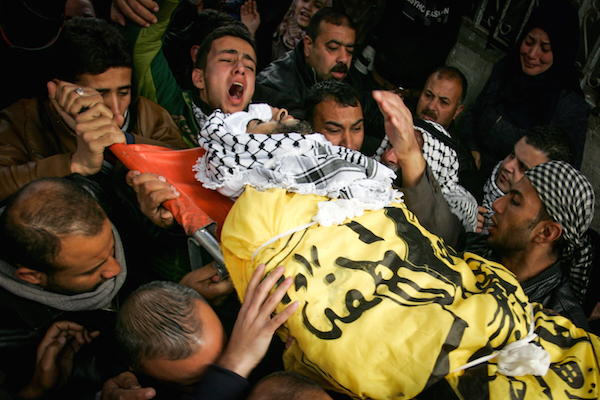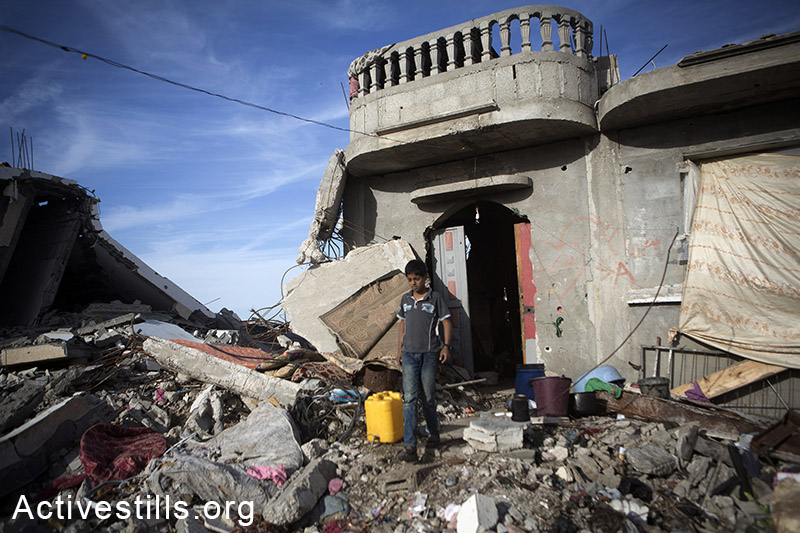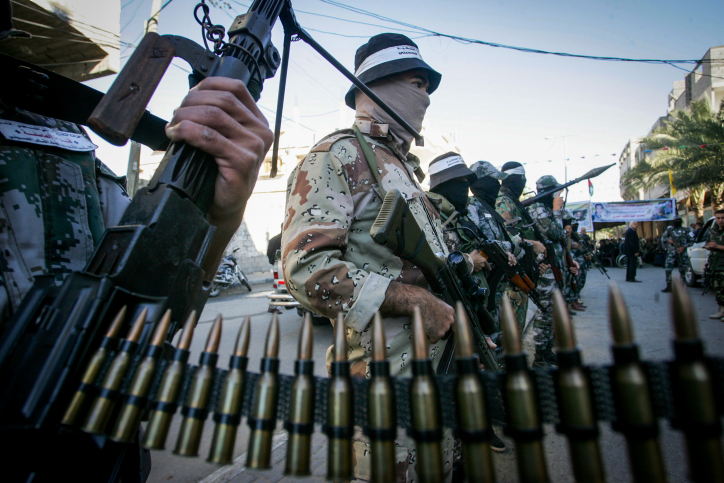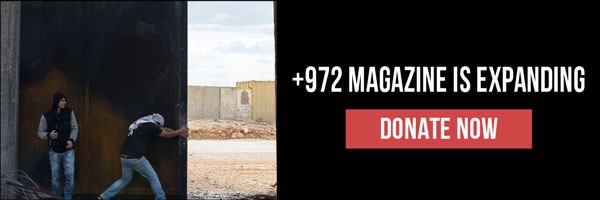Gaza-based journalist Saud Abu Ramadan talks to +972 about the limits that Palestinian protesters face in Gaza and asks, how, under the existing conditions, the residents of Gaza are supposed to resist.

Saud Abu Ramadan is a Palestinian journalist based in Gaza. On July 30, 2014, his office on the eighth floor of the Al Basha tower was destroyed by Israeli tank shelling, an experience he spoke to +972 about at the time. On Saturday, he gave his perspective on the latest developments in Gaza, where four people have been killed by Israeli forces since Thursday.
Thirty years to the day after they gave birth to the first intifada, the Palestinians of Gaza came out en masse Friday, calling for an end to the Israeli occupation and affirming Jerusalem as their nation’s capital. The anniversary made of the protests a kind of rite, recalling the First Intifada’s “children of the stones” and offering a reminder that, three decades and as many wars later, Israel had failed to extinguish that generation’s yearning.
Like those who came before them, Palestine’s new ranks form a body politic that, against all odds, has kept that common cause. This, after all, is the Oslo generation, reared in the purgatory between process and peace, its geographies rent by racial gerrymandering and force. Yet if the protests in Gaza echoed those in East Jerusalem and the rest of the West Bank, there was also one painfully obvious difference: in Gaza, the object of the Palestinians’ rage was nowhere to be seen.
Abu Ramadan reminds me that, except for its two “ground wars” in 2009 and 2014, Israel’s occupation has, for more than a decade, been managed from a distance. Snipers are barricaded behind the territory’s buffer zone. Pilots are harnessed in supersonic jets. Drone operators sit at banks of screens, executing death warrants from above.
That anonymity may help explain why Gaza has borne the brunt of Israel’s violence in recent years, registering more Palestinian civilian deaths in the 51 days of Operation Protective Edge than in the six years of the First Intifada. And if Israeli airstrikes and shelling over the last three days are any indication, the Netanyahu government seems intent on exacting a high price for the Palestinians’ present protest.
Already, the signs are worrying. According to Abu Ramadan, founder and news editor of The Gaza Post, several hundred protesters gathered on Friday just east of Khan Younis in Khuza’a, a town virtually leveled by Israeli shelling in the summer of 2014. The area sits along the Israeli-imposed buffer zone, which under the terms of Israel’s 2005 “disengagement” from Gaza, was to cut 150 meters into the Palestinian territory.
The buffer now extends to twice that distance, according to a January 2017 B’Tselem report, making any protest along its edges subject to Israeli sniper fire. During Friday’s protests, 25 Palestinians were struck by live ammunition, according to a press statement from Gaza’s Health Ministry. And by the end of the day, two of the demonstrators had been killed.
The circumstances of their deaths point to a familiar problem, Abu Ramadan explains. To confront the decade-long Israeli siege, Palestinians in Gaza have few options to register their protest. While militant factions can lob rockets across the border, civilians amass within firing distance of the cement guard towers enforcing the blockade. They sometimes hurl stones, but these have no chance of reaching across the buffer zone.

“They present no danger at all to the soldiers,” says Abu Ramadan of the protesters. “And unlike in the West Bank, they have no cover.”
That’s because the buffer zone is mostly agricultural. According to the Palestinian Centre for Human Rights, the area represents roughly a third of Gaza’s total arable land, making farming there a treacherous pursuit. As B’Tselem and others have documented, Israeli forces routinely encroach upon the area, spraying it with pesticides and taunting farmers who get too close to the Israeli side.
No doubt aware of the buffer zone’s risks, Hamas leader Ismail Haniyeh, in a speech from Gaza on Friday, called for a new intifada to confront the “danger that threatens Jerusalem and threatens Palestine.” This was to be a revolt of the masses, in no small part because Hamas has neither the interest nor backing for another armed battle with Israel.
But how are the civilians of Gaza to participate in a new intifada?
For Abu Ramadan and the rest of Gaza’s 1.8 million Palestinians, the answer to that question could have lethal consequences — a sure reminder that agency must reside with them, not with outside analysts or foreign royalty. Still, the question is a strategic one for the Palestinian liberation struggle. Whatever form it ends up taking, how can that struggle empower the civilians of Gaza, mobilizing them in ways that do not advantage their oppressor?

To Abu Ramadan, hurling stones into an empty field, for example, is not empowering, especially if it allows the occupier to kill with such faceless impunity.
The path to direct mass confrontation is perhaps clearer in the West Bank and Jerusalem. In the former, Israeli military jeeps are a persistent sight. In the latter, every detail of Palestinians’ lives involves interaction with Israel. But whether it comes through the bullet or the baton, the mortar or the sortie, Israel’s occupation is, in all cases, a colonial project. On principle, it is being met with like-minded resistance from all Palestinians, including in the diaspora (and, indeed, by all people of conscience).
If the past week is any indication, Palestinians seem to be taking stock of their collective resources — human, financial, intersectional — and aligning them with a new vision of resistance. Including Gaza in that vision will not only make the resistance stronger, it could help shorten the difficult road to freedom and, in so doing, save thousands of lives.


